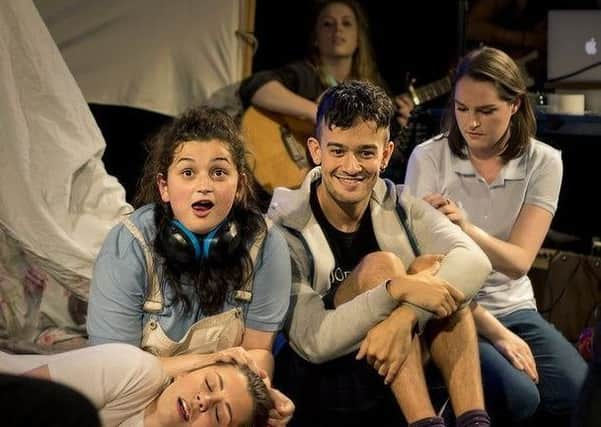Edinburgh-Adelaide Fringe prize set to broaden its horizons


Now she is widening her hunt for shows, she tells The Scotsman. She will pick work from here for two other festivals in South Australia: the Feast Festival, Adelaide’s annual LGBTI event, in November, and the Adelaide Cabaret Festival in June.
Lott arrived in Edinburgh this week from the set of Storm Boy, a remake of an iconic Australian film from 1976 – she is playing a small role in the film, which stars Geoffrey Rush. She will see a shortlist of about 20 shows in the running for her award, which covers the costs – from flights to venue hire to marketing – of taking an Edinburgh production to the other side of the globe.
Advertisement
Hide AdAdvertisement
Hide AdThe Adelaide Fringe was launched in 1960, and was, as in Edinburgh, the unofficial offspring of the main Adelaide Festival. As a city that’s been off the beaten tourist track in Australia, without the fame of Sydney or Melbourne, Adelaide is fiercely proud of being the second largest Fringe festival in the world.
Edinburgh boasted nearly 2.5 million ticket sales in 2017; this year Adelaide sold only 655,000 tickets, and featured about 1,350 performances or events. Adelaide remains the much smaller sibling, but it is still a month-long regional “mothership” for theatre, and both events are trade shows. “You don’t go to Adelaide to make money,” says Lott. “You don’t come to Edinburgh to make money. The point is to get reviews, and further tours, and opportunities.”
Both cities have been fostering the connections in the last decade. The Made in Adelaide showcase in Edinburgh this year features 28 acts, running from the impressive cabaret singer Carla Lippis, to the play The Girl who Jumped Off the Hollywood Sign. This year, Adelaide put Edinburgh’s Red61 ticketing system into use for the first time.
If Adelaide has often learned from the Edinburgh model, including the use of multi-theatre venues, it has one asset that Edinburgh currently lacks, regulars say: the Artists’ Bar, where performers and producers from across the festival, not just a single venue, can meet in a communal and convivial melting pot.
Lott first came to Edinburgh in 2005, performing here in 2007. She gave out the first Holden Street Theatres award in 2008. In her early days, she says, hunting down the right pick, she might aim for eight or ten show on some days; she saw 200 shows one year.
“I would be scrabbling like mad to try and find out who thought what was good, it was incredibly exhausting,” she says. “I would see so many shows, everything I possibly could. I would go and sit in a venue all day and see everything in it back to back. There were days when I’d barely go out of the room.” She set up the award, she says, to make it easier to narrow the search to the right shows.
Over the years, she says, the award has established its reputation as a benchmark for quality; shows have been subsequently picked out for transfers to New York. “We like to see the new trends in writing and the theatre styles. We like to take those back to Adelaide as well, to bring ideas and open doors to what’s happening over here. Sometimes that can be a challenge, in bringing something that’s completely new or raw for the audience to trust.”
Advertisement
Hide AdAdvertisement
Hide AdIn Adelaide, she says, “without being disrespectful to Fringe audiences, sometimes there’s a want for a level of escapism. People want to be entertained and have a great night out and not necessarily see something that’s hard, and strong.”
A key to Adelaide’s success is for companies to go out and engage with audiences, in a festival that sees little flyering. “ That’s a really big point for us,” says Lott. “We encourage the artists to be in the bar and talk to the audience, go on bike rides. Our audience take the artists out, they want to feel a part of that show and feel a part of that success. Shows that come over and have a diva mentality generally sink pretty quick.”
There’s a strong connection with Adelaide on the comedy front; Edinburgh comedians will often test-run Adelaide shows, in the informal setting of pop-up venues like Tuxedo Cat. “Adelaide audiences are very tolerant guinea pigs,” says the comedian Louise Reay, who built her show, Hard Mode, at the Stand in Adelaide.
It can be a gamble taking shows to Australia. Posters have to be changed, and sometimes names. Australian Joanne Hartstone, performing here this year in The Girl who Jumped Off the Hollywood Sign, part of the Adelaide showcase, is also a director who takes Edinburgh shows to Adelaide venues: last year she presented We Live by the Sea at the Royal Croquet Club.
The Pleasance show, about a girl with autism in a seaside town, got four and five star reviews in Edinburgh. In Adelaide, it was also an instant hit. “It made a huge amount of money and audiences flocked to it because of its social relevance, its quality. It tugged at the heart strings,” Lott says.
“We didn’t have to do anything with it because the parallels between what that family would go through in England, and a similar family in Adelaide would go through, are absolutely clear.”